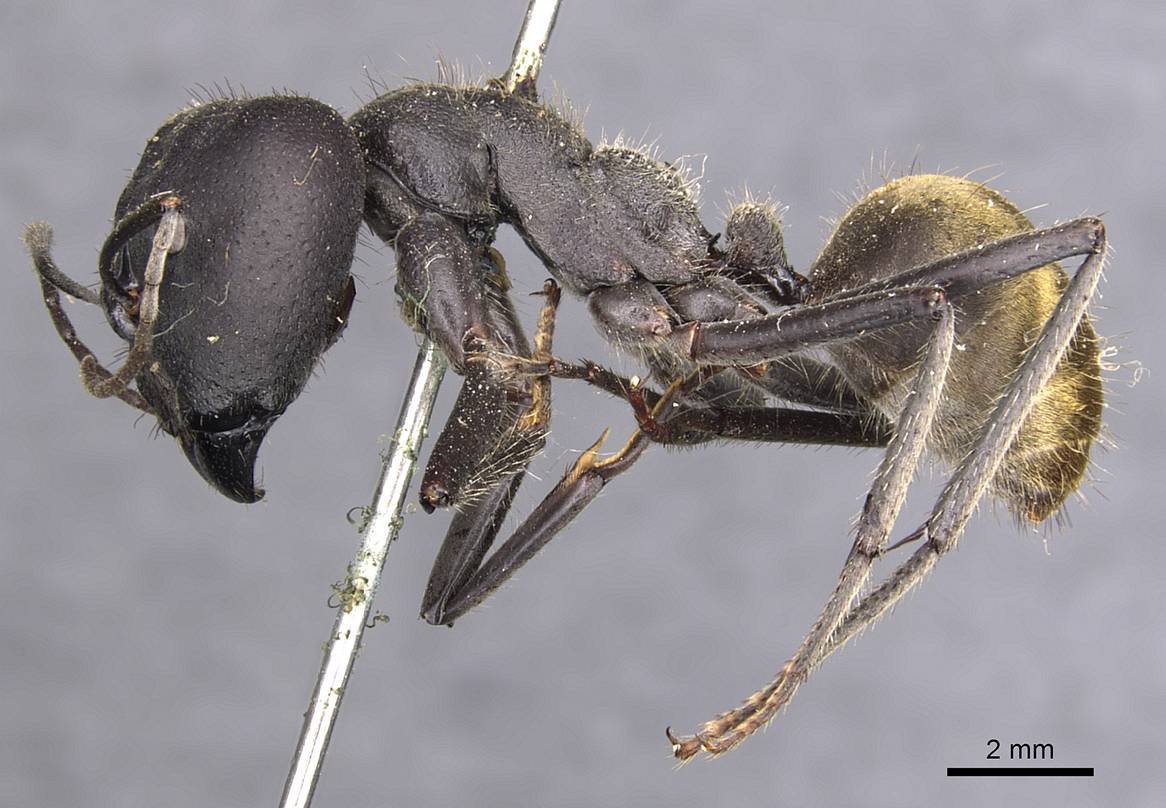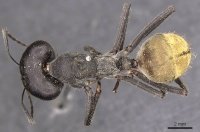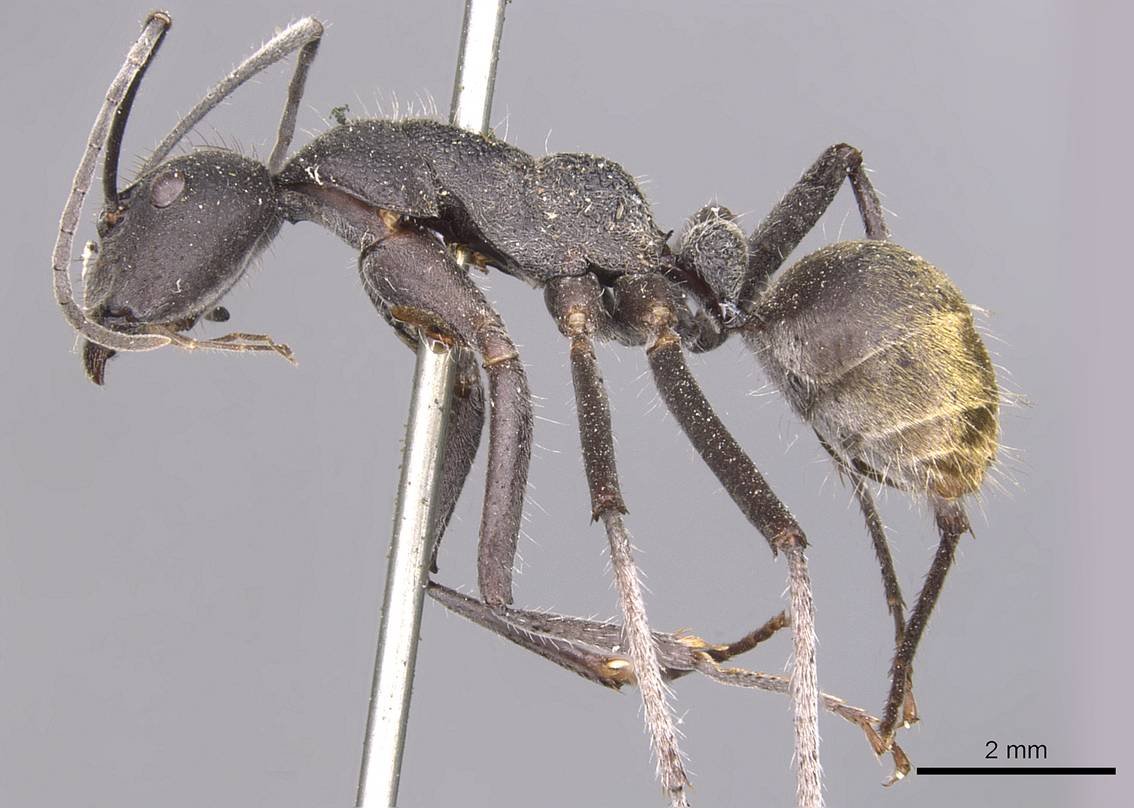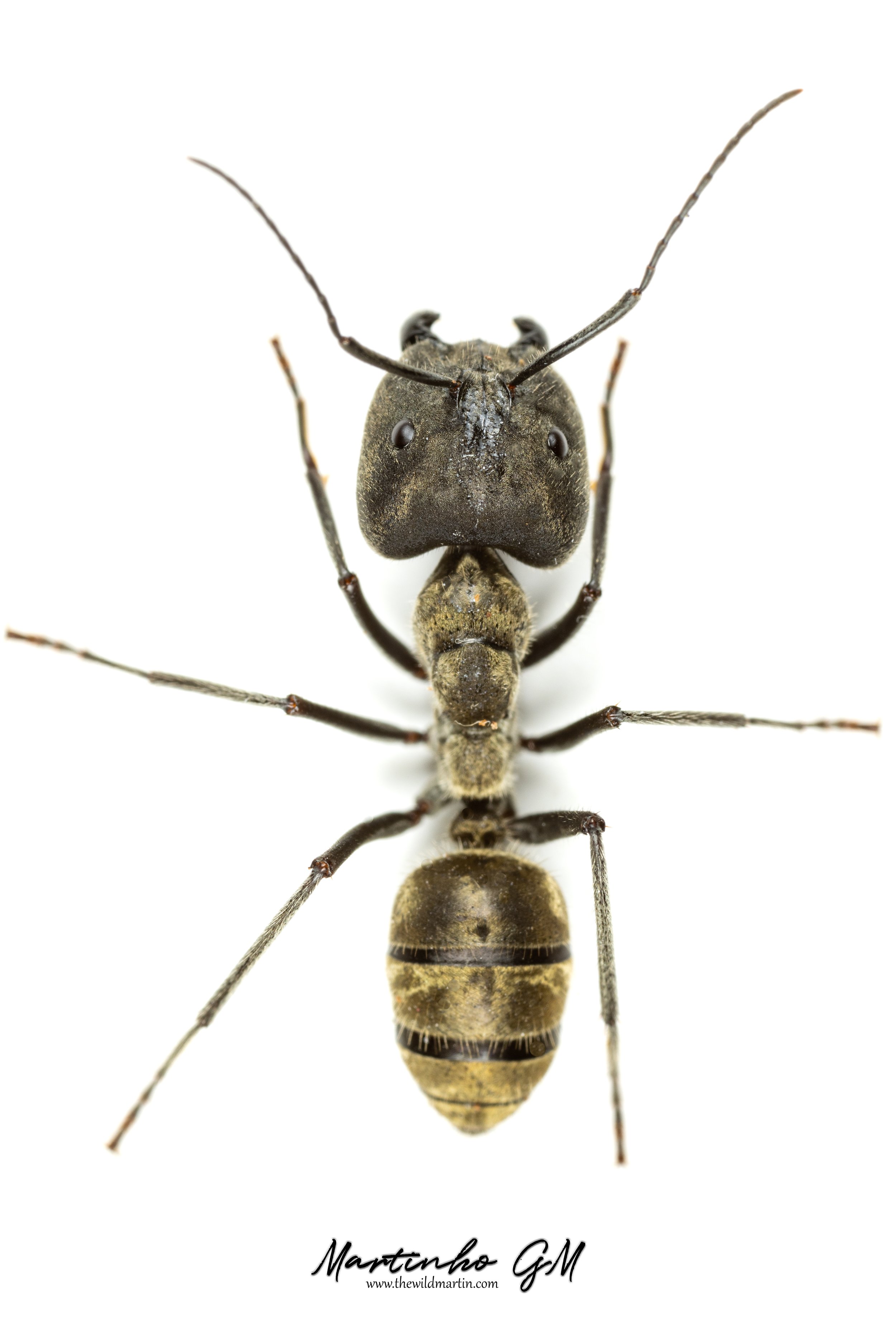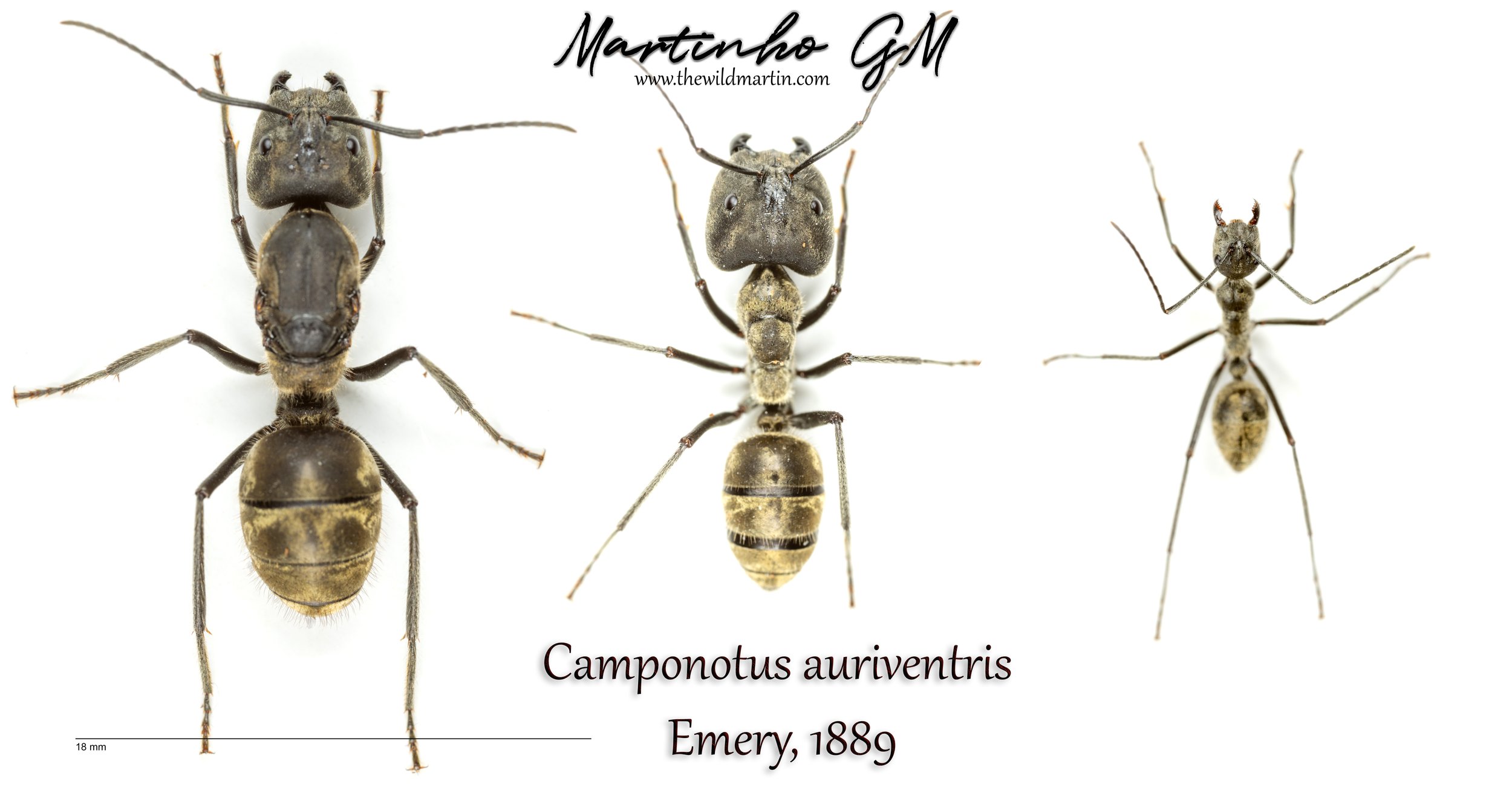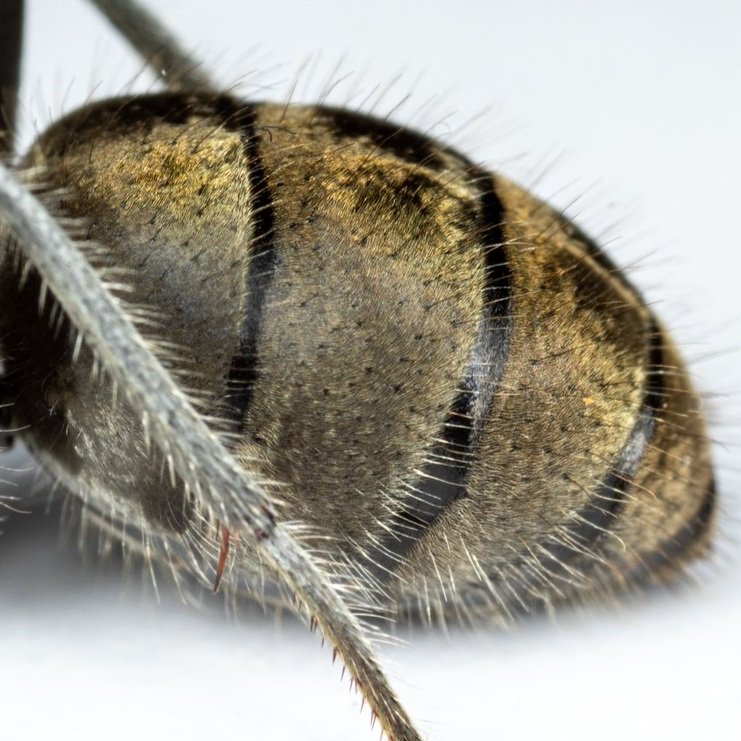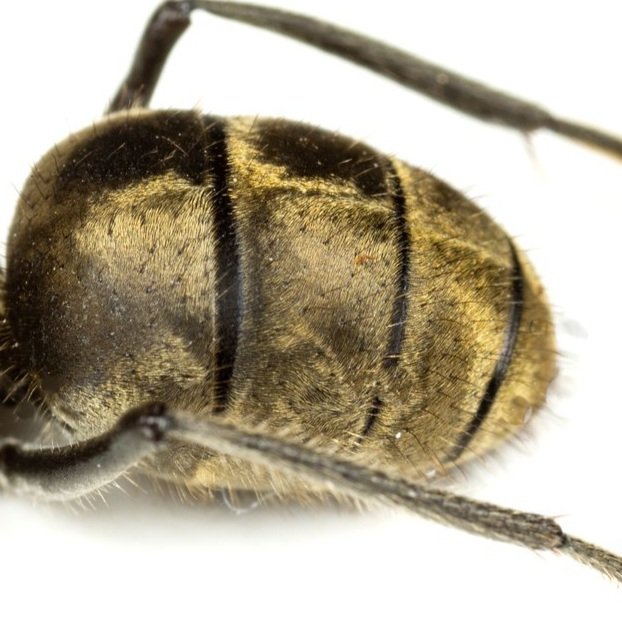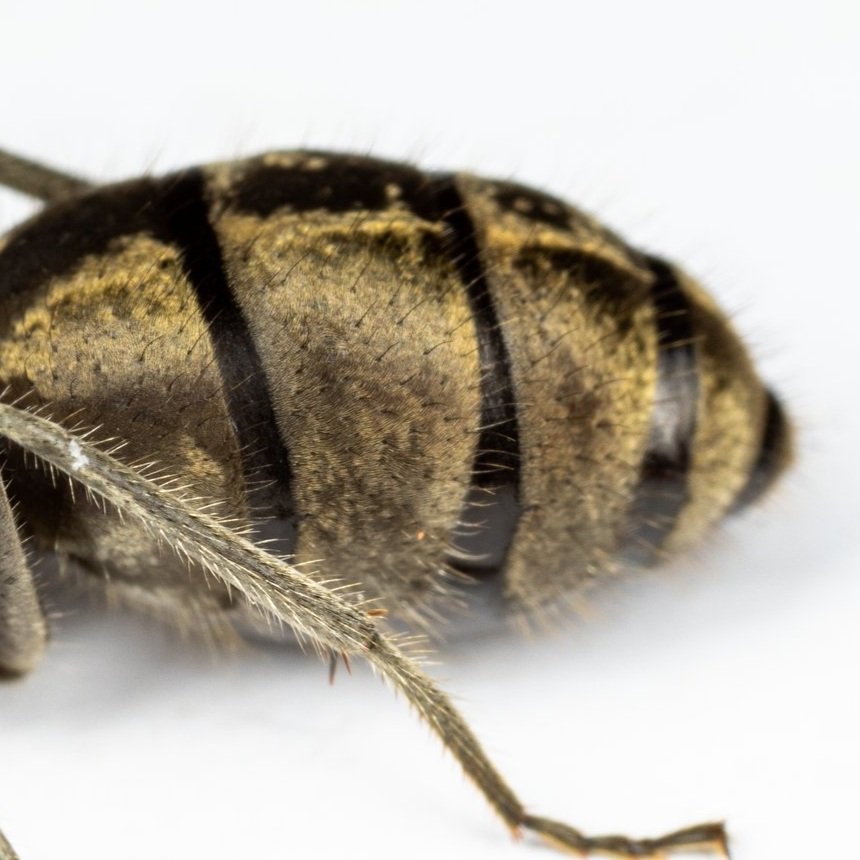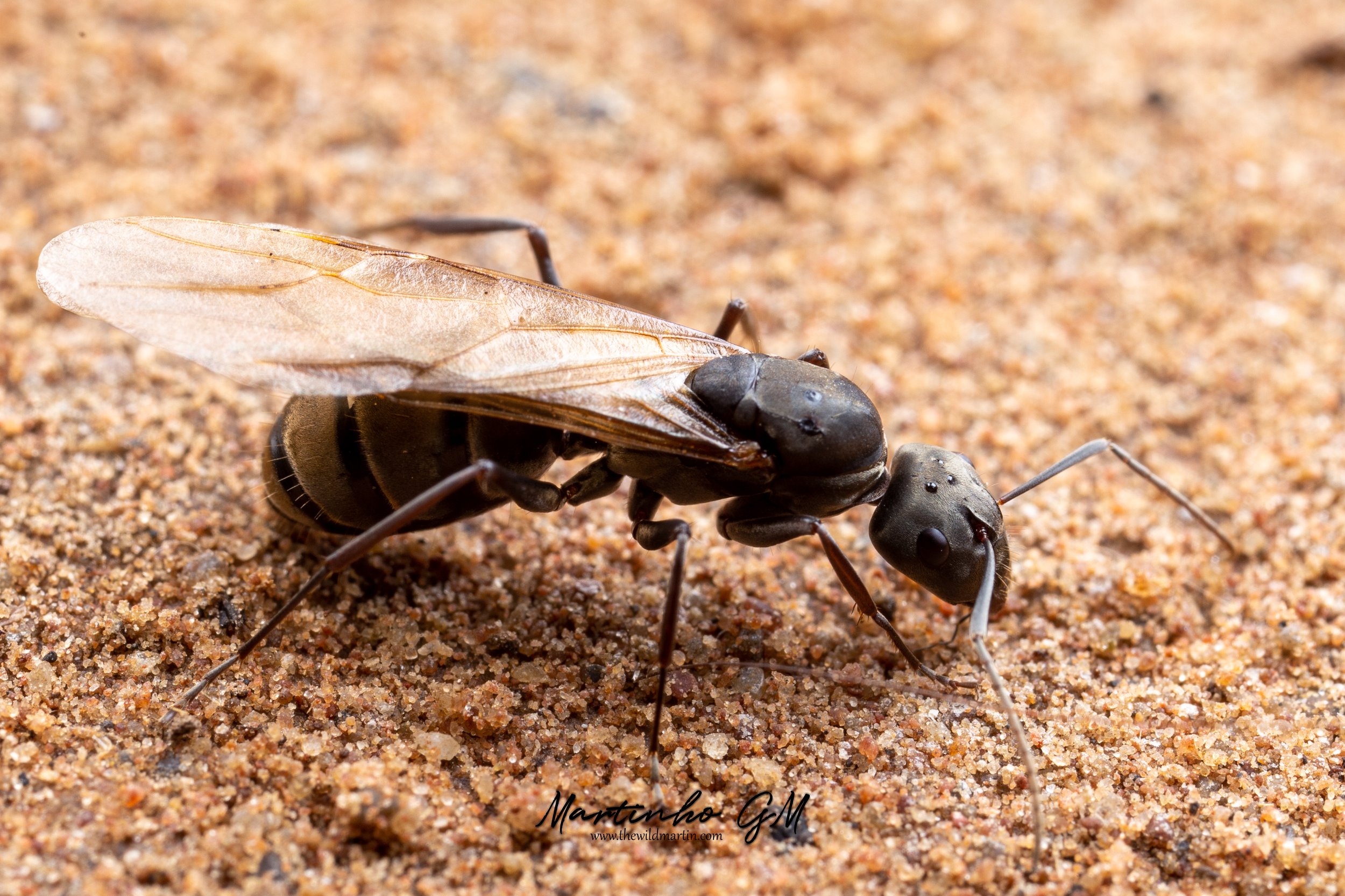Camponotus auriventris, the Monster Head Carpenter Ant
Welcome to a long due ant post about Camponotus auriventris…. but this time, the true Camponotus auriventris!
First lets go look at some definitions and specimen photos!
Camponotus (Myrmosaulus) auriventris, (Emery 1889) - Myrmosaulus is a subgenus of Camponotus.
Myrmosaulus is also commonly called the Monster-head Carpenter Ants
Diagnosis: Emery (1925). - "Worker and queen. - Large to medium species; dimorphism pronounced. Head of majors generally with lateral margins rounded, posterior margin concave; head of minors with lateral margins straight or rounded, posterior margin convex or ogival (missile-shaped), ending in some species as neck, as in Dinomyrmex and some species of Tanaemyrmex. Clypeus carinate medially or subcarinate; anterior margin produced as rectangular or rounded lobe, as in Tanaemyrmex. Mandible with 6–8 simple teeth along masticatory margin; denticles sometimes present along basal margin. Scapes slightly surpassing posterior head margin, even among majors. In workers, mesosomal dorsum rounded; metanotal-propodeal suture deeply to slightly impressed; in former case, propodeum shaped as rounded bump; metanotal spiracles very apparent on sides of mesosomal dorsum. Petiol generally more-or-less nodiform. Scapes and tibiae with fine, whitish hair.
Distribution
Although AntMaps.org and Antwiki limit the distribution of this species to the follow regions, Borneo, Indonesia, Malaysia, Myanmar, Thailand, Vietnam.
It is known that there are Camponotus auriventris in China, Yunnan Province, which borders both Vietnam and Myanmar, two regions where this species occurs.
Specimen Images
As you can see, the major head is extremely large, rounded and concave. Both major and worker’s gaster is highly pilose, which means covered with minute golden hairs. Unfortunately there are no images of the Camponotus auriventris queen.
There are more characteristics, like the really dark coloration, etc…
Here is the complete list of species within the Myrmosaulus subgenus:
Camponotus auriventris,
Camponotus aurocinctus,
Camponotus batesii,
Camponotus camelinus,
Camponotus holosericeus,
Camponotus intrepidus,
Camponotus leae,
Camponotus molossus,
Camponotus singularis,
Camponotus suffusus,
Camponotus versicolor,
Camponotus whitei
I want to highlight 3 species (auriventris, singularis and holosericeus) which we will be seeing next.
But now let me show you the macro photos of some of the individuals from my newly received colony and why I say this is true Camponotus auriventris. Let’s see them in more detail.
Camponotus auriventris Queen
Camponotus auriventris Queen
Camponotus auriventris Queen
Note how “hairy” she is and how golden her hairs are, especially on the gaster. Also to note the rounded, concave and disproportionate head, just like in the description.
Now let’s look at a major.
Camponotus auriventris Major
Camponotus auriventris Major
Now let’s run some comparisons with other Myrmosaulus species from my photographic records. Camponotus singularis and Camponotus holosericeus.
Camponotus singularis
Camponotus auriventris
Camponotus holosericeus
By comparing these photos, we can say that singularis is the red version of auriventris, or vice versa, auriventris is the black version of singularis, and that holosericeus disproportions are not so accentuated like in auriventris and singularis.
Finally, some interesting scaled comparisons between auriventris and singularis.
Scaled comparison between componotus auriventris and componotus singularis Queens
Scaled comparison between componotus auriventris and componotus singularis Majors
Basically, both species are equally sized, possibly with minor variances depending on the individuals used for the comparison.
And now to wrap up the post, let me correct some mistakes of the past.
You may have seen some of my photos before referencing Camponotus auriventris.
Well, I was absolutely mistaken and wrong. This is most probably Camponotus parius, which belongs to the subgenus Myrmosericus, which are commonly called Silky Carpenter Ants, hence probably the confusion because that golden/silver/metallic iridescence can be observed on the Queens as well. But unlike Camponotus auriventris, Camponotus parius is considered a Medium-sized species with elongate bodies and their head proportions are much less prominent.
Camponotus parius - please check this link for better image comparisons of individuals of Camponotus parius.
A Camponotus auriventris or singularis queen measures 20mm, as you can see by the scale placed on my photos.
A Camponotus parius queen measures 13mm.
Unfortunately, this mistake is now widespread throughout the web…. a quick search online for Camponotus auriventris will give you in return tenths of links to ant shops selling Camponotus parius as Camponotus auriventris.
I hope my post can now help to correct some of my past mistakes, shine some light on this issue and serve as a visual guide to help to better identify the real Camponotus auriventris.
Thank you so much for your time and for stopping by to read this post.
Let me know if you have any comments and requests.
See you on the next post!
Cheers!


